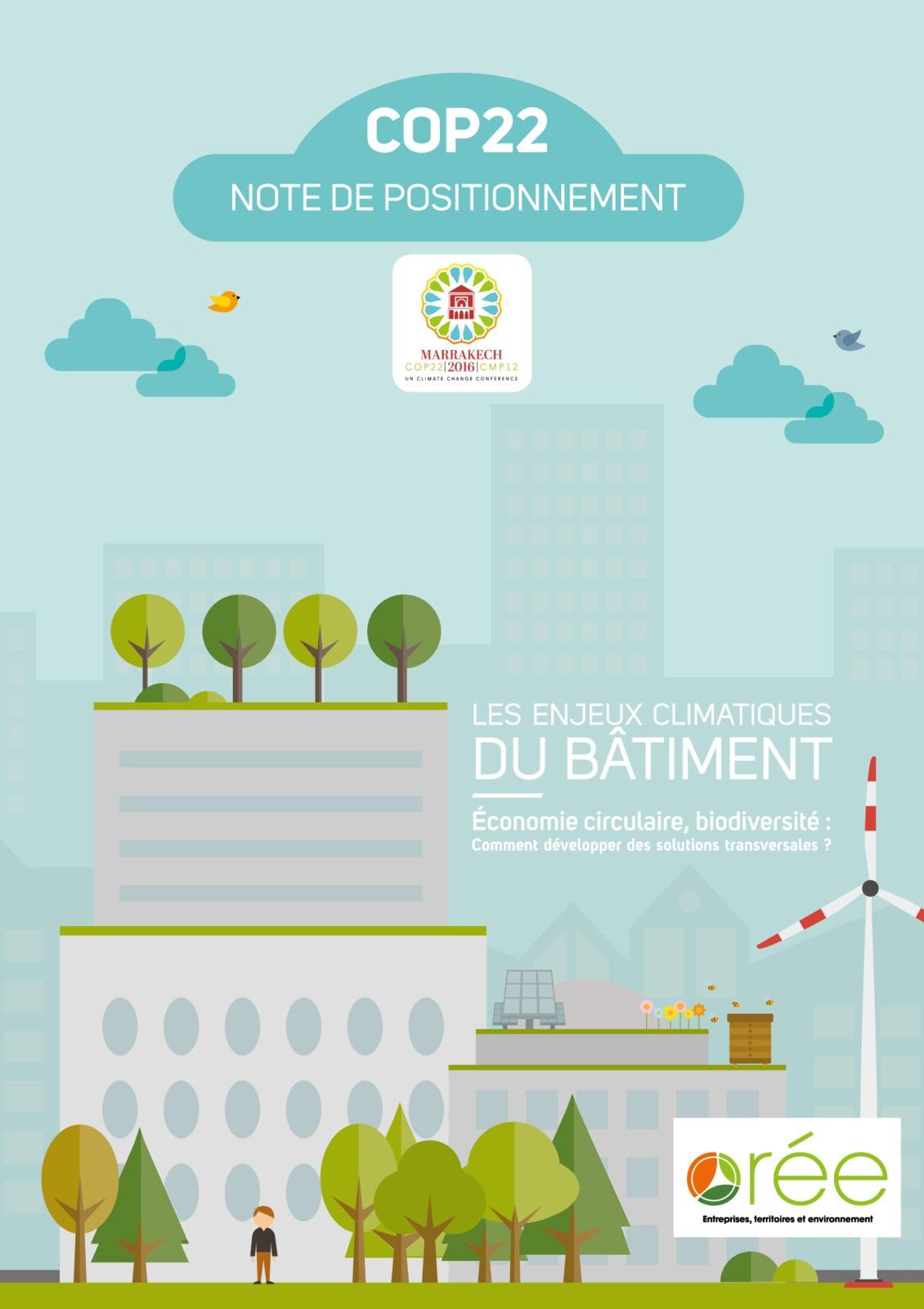Analysis: Climate challenges for buildings

During COP22 in Marrakech, Orée presented its new publication: « Les enjeux climatiques du bâtiment. Économie circulaire, biodiversité : Comment développer des solutions transversales ? (Climate challenges for buildings. Circular economy and biodiversity: How to develop cross-sectoral solutions?)"
In this note, Orée shares joint thinking on the circular economy and biodiversity, to propose practical and efficient solutions in the fight against climate change.
Climate challenges for buildings, which represent almost a quarter of CO2 emissions in France, are addressed as part of a comprehensive approach, which emphasizes the importance of a multi-scale and multi-stakeholder approach. In addition, examples illustrate possible actions to inspire those involved in different regions.
Several key ideas emerge from this study:
- Take action at design stage. Extraction of materials , transport and the construction phase are crucial preliminary stages when trying to alleviate the environmental impact of the building. Using innovative methods such as eco-design or biomimicry, which takes biodiversity as a source of inspiration, it is possible to effectively and sustainably reduce the footprint of the sector.
- Anticipate changing uses. Modularity, reversibility and anticipating deconstruction also contribute to reducing the climate impact of the building. An apartment in which the number and size of rooms can be adjusted as needed prevents it from becoming obsolescent prematurely. Limiting the use of complex materials such as alloys and glues facilitates the dismantling, reuse and recycling of materials.
- Change the scale of action. Synergies between buildings generate better management of flows of people, materials and energy. Mixed office/residential areas, for example, make it possible to share facilities such as car parks, used by employees by day and residents by night. With planning such as local urban development plans or regional integrated development plans, buildings must be registered in their local contexts. In this way, flows designed on a large scale promote more efficient management of resources and better consideration of biodiversity. This is particularly the case of buildings connected to networks for recovering waste heat from industrial facilities.
Download the note in French and in English!